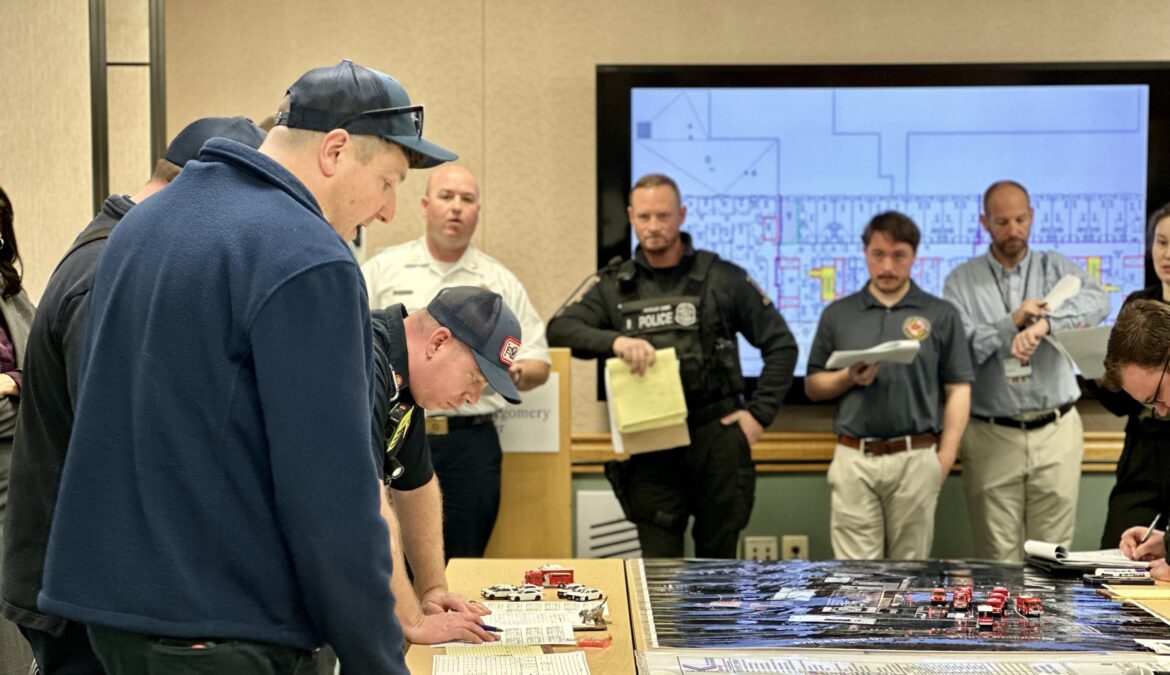In November of 2023, four Prince George’s County Police Department (PGPD) Special Operations Division (SOD) personnel attended the Direct-Action Resource Center (DARC) Advanced Sniper Integration course (ASIC) in Little Rock, Arkansas. MDERS has continuously supported DARC training for PGPD stakeholders over the last several years, including the Advanced Operational Breaching Techniques (AOBT) course and levels one and two of the Kinetic Breachers course. The DARC Advanced Sniper Integration training allowed law enforcement stakeholders to practice and enhance their skills individually and as a cohesive unit.
DARC, founded by a former United States Army Green Beret, is situated within a secluded outdoor training site in Arkansas. It offers a diverse array of shooting locations for snipers, notably featuring a 1000-yard range atop a 40-60 ft. platform. During the training, PGPD SOD personnel honed their skills in several advanced areas, including environmental condition adjustments, long-distance night shooting, angle shooting, primary/alternate shooting positions, overwatch and operations techniques, as well as vehicle hide-sight set-up. These skills, along with many others, are poised to enhance PGPD SOD’s operational readiness in addressing a wide spectrum of incidents, including those involving active assailants and barricaded individuals.
The PGPD SOD officers attending the DARC course engaged in a comprehensive training program aimed at seamlessly integrating a proficient sniper/observer team into the support framework for intricate and expansive tactical operations. A sniper/observer team is primarily comprised of four to six officers, all trained to fulfill both sniper and observer roles interchangeably. This six-day course allows snipers to refine their skills across diverse environments, including day and night operations, live-fire support of tactical ground operations, and flat-range operations. The second half of the course coincides with an Advanced Operational Breaching Techniques course, allowing participants to collaborate with another training class during live fire building clearance exercises, as well as interior and exterior explosive breaching scenarios.
Along with the four PGPD SOD personnel, two MDERS representatives, Hannah Thomas, and Elizabeth Adams, had the opportunity to attend and observe the training. Their presence coincided with the latter part of the training, during which the two courses, Advanced Sniper Integration Techniques and Advanced Operational Breaching Techniques, merged and conducted joint exercises. Hannah Thomas, a Senior Emergency Response Specialist with MDERS, recognized how crucial this training was and stated:
Senior Emergency Response Specialist Hannah Thomas
“Participants in this course experienced an unparalleled level of instruction. Witnessing the course content delivered to PGPD officers at an exceptionally high standard was truly remarkable.”
Emergency Response Specialist Elizabeth Adams
“The training staff and PGPD SOD personnel welcomed MDERS representatives warmly and provided valuable insight into the essential and necessary training they were receiving and how attending DARC ultimately benefits their tactical operations.”
PGPD SOD will continue to receive ongoing support from MDERS to participate in future DARC training sessions, ensuring sustained skill development in alignment with the MDERS strategic plan. DARC remains one of MDERS’s most trusted and superior training providers. With their support, MDERS stakeholders have access to a contingent of subject matter experts to help them refine and enhance their skills in tactics and strategies for sniper operations.
For more information about DARC, please visit https://www.darc-usa.com/courses





 during an active assailant incident. This exercise will help bolster the response capabilities for each discipline to respond to an active assailant incident in a medical setting.
during an active assailant incident. This exercise will help bolster the response capabilities for each discipline to respond to an active assailant incident in a medical setting.